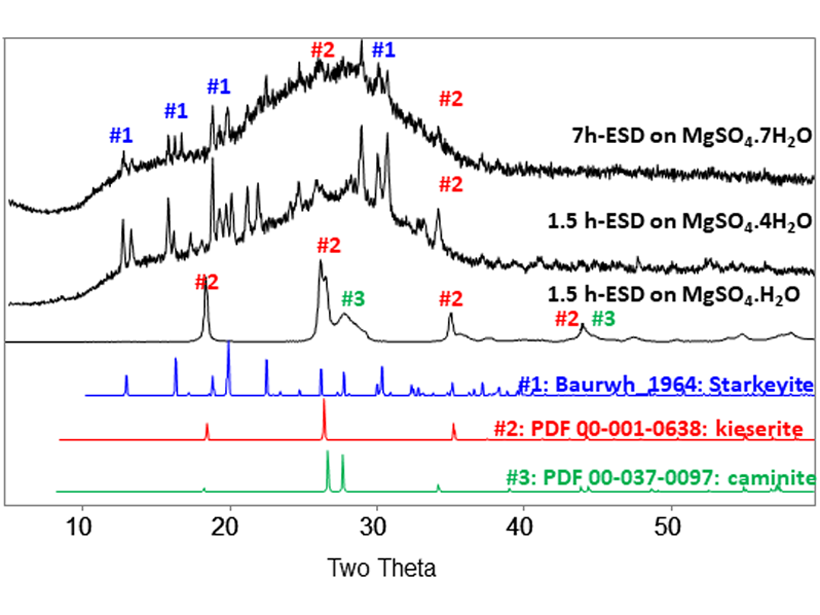Source: Journal of Geophysical Research: Planets
Homogenized by global storms, Martian dust contains an abundant amorphous (poorly crystalline) component, the source of which has been unknown. Wang et al. [2020] investigate a hypothesis that electrostatic discharge (i.e., like lightning or Aurora on Earth) during dust activities amorphize chlorine- and sulfur-bearing salts in dust by disrupting the crystal structure. Dust activities that would generate charged particulates to induce phase changes by electrochemistry include grain saltation, dust devils, and global dust storms.
The authors conducted electrostatic discharge experiments in a Mars chamber and confirmed they produced amorphous materials from hydrated sulfur- and chlorine- bearing salts by Raman spectroscopy, X-Ray Diffraction, Mössbauer spectroscopy, and Vis-NIR spectroscopy. Other phase changes produced by their experiments involved dehydration (loss of structural water) and oxidation of chlorine, sulfur and iron. If the prevalent amorphous component in dust is predominantly produced by electrostatic discharge during dust activities, then it must represent a significant, frequent, and ongoing process all over the present-day Mars surface.
Citation: Wang, A., Yan, Y., Dyar, D. M., Houghton, J. L., Farrell, W. M., Jolliff, B. L., et al. [2020]. Amorphization of S, Cl‐Salts induced by Martian dust activities. Journal of Geophysical Research: Planets, 125, e2020JE006701. https://doi.org/10.1029/2020JE006701
―Mariek Schmidt, Associate Editor, JGR: Planets
Text © 2021. The authors. CC BY-NC-ND 3.0
Except where otherwise noted, images are subject to copyright. Any reuse without express permission from the copyright owner is prohibited.

